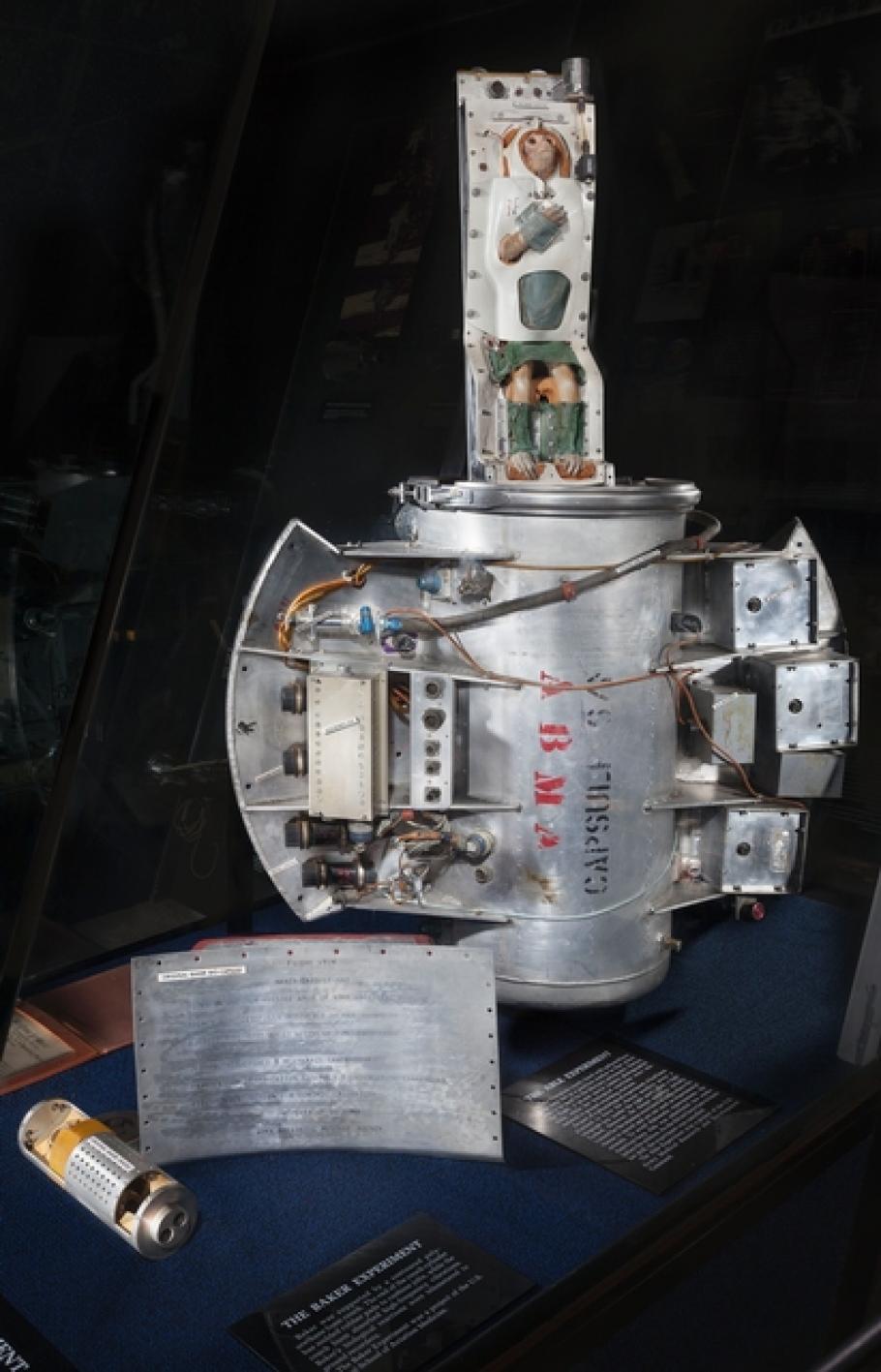This biocapsule carried Able, a female rhesus monkey, during the first flight to recover a primate from space. On May 28, 1959, an Army Ballistic Missile Agency Jupiter rocket at Cape Canaveral launched Able and Baker (a female squirrel monkey housed in a separate capsule) in its nose cone. Their biomedical condition was monitored throughout the flight as part of Department of Defense experiments to determine the effects of spaceflight on living animals. They reached an altitude of approximately 300 miles, a maximum speed of 10,000 mph, and were recovered alive some 1,500 miles downrange by U.S. Navy ships. The flight provided important biomedical data for the human spaceflight program. The capsule was built by the Army Ballistic Missile Agency, which transferred it to NASM in 1960.
Display Status
This object is not on display at the National Air and Space Museum. It is either on loan or in storage.
Object Details
Country of Origin
United States of America
Type
SPACECRAFT-Crewed-Test Vehicles
Manufacturer
U.S. Army Ballistic Missile Agency, Redstone Arsenal
Dimensions
3-D (Body): 111.8 × 66 × 92.1cm (3 ft. 8 in. × 2 ft. 2 in. × 3 ft. 1/4 in.)
Materials
Components: Plastic
Overall - Aluminum
Wiring - Copper, Steel
Inventory Number
A19600217000
Credit Line
Transferred from U.S. Army Ballistic Missile Agency
Data Source
National Air and Space Museum
Restrictions & Rights
Open Access (CCO)
For more information, visit the Smithsonians Terms of Use.

